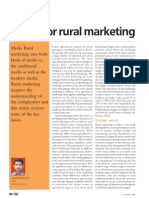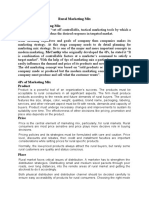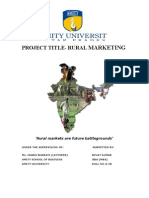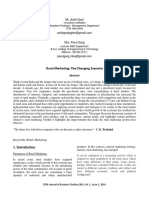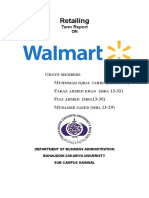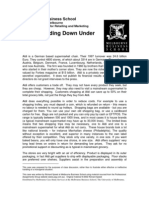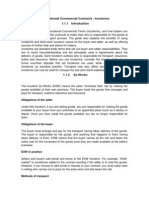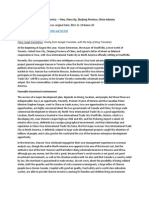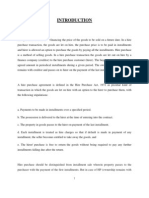0% found this document useful (0 votes)
99 views4 pagesPromotional Strategies For Services in Rural Market: Dr.S.Vishnuvarthani
This document discusses promotional strategies for services in rural markets. It begins with defining key concepts like rural markets, the nature of rural markets, and the definition of a service. It then outlines the 7 Ps of the service marketing mix - product, price, place, promotion, people, process, and physical evidence. The document emphasizes that promotion plays a vital role in rural areas to make services reach consumers. It states that the selection of promotional tools, messages, and defining a promotional cycle are important components of a promotional plan for services in rural markets.
Uploaded by
Ben MathewsCopyright
© © All Rights Reserved
We take content rights seriously. If you suspect this is your content, claim it here.
Available Formats
Download as PDF, TXT or read online on Scribd
0% found this document useful (0 votes)
99 views4 pagesPromotional Strategies For Services in Rural Market: Dr.S.Vishnuvarthani
This document discusses promotional strategies for services in rural markets. It begins with defining key concepts like rural markets, the nature of rural markets, and the definition of a service. It then outlines the 7 Ps of the service marketing mix - product, price, place, promotion, people, process, and physical evidence. The document emphasizes that promotion plays a vital role in rural areas to make services reach consumers. It states that the selection of promotional tools, messages, and defining a promotional cycle are important components of a promotional plan for services in rural markets.
Uploaded by
Ben MathewsCopyright
© © All Rights Reserved
We take content rights seriously. If you suspect this is your content, claim it here.
Available Formats
Download as PDF, TXT or read online on Scribd
/ 4












